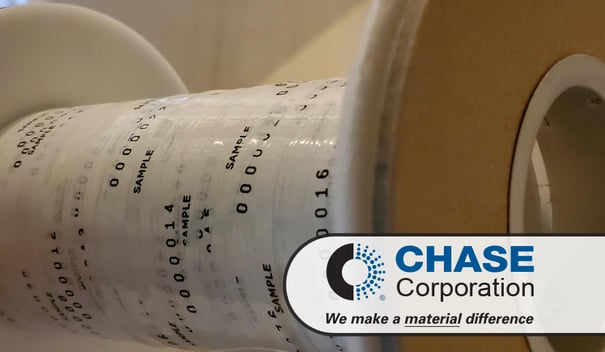Not a day goes by that we don’t hear about the effects of COVID-19. The number of those infected,...
Marker Tapes, Options & Applications
 Chase Corporation has one of the broadest ranges of wire and cable component materials globally. Our NEPTCO line of products includes marker identification tapes, which are used both inside and outside the wire and cable industry.
Chase Corporation has one of the broadest ranges of wire and cable component materials globally. Our NEPTCO line of products includes marker identification tapes, which are used both inside and outside the wire and cable industry.
Manufactured by NEPTCO for 65 years, marker tapes can be used to identify specific individual conductors or distinguish finished cables. Since cables are used in such a wide variety of applications, there are several marker tape constructions. Using various raw materials, we produce the tapes to meet the specific designs and environmental requirements of the end use cables.
Marker tapes constitute a low-cost method of incorporating a permanent identification into or on a cable core.
In addition to the quality and accuracy of the tapes we manufacture, lead time is a key aspect of supplying this cable component. During 2019 we unfortunately experienced longer than typical lead times due to the consolidation of our manufacturing plants and processes; however, we are past that situation and back to our standard short lead times. Our rapid production process is aided by the fact that we make our own dies, per customer orders, so we do not have to depend on outside die makers and their lead times.
In addition to the printed specification, we can also provide footage or meter marks for the tapes, so there is a length measurement for that manufactured cable length. This also assists in identifying a specific location in a cable should it be damaged in any way. Depending on the tape application, we can offer tapes as narrow as 3/64 inch for economy and/or small diameter cables.
The most common marker tape construction is a single layer of polyester (PET) tape printed on one side and used to identify the finished cable construction. It can be printed with anything that the manufacturer requests, such as manufacturer’s name, date of manufacture, the UL specification or other specifications that the cable meets, etc. Some cable manufacturers emboss this information on the outside of the cable; however, there continues to be a requirement to insert a marker identification tape under the outer jacket of the finished cable. In some cases, this could be to meet an older specification. Despite more cables being identified through surface techniques like embossing / printing, there continues to be a market for the under-the-outer-jacket application.
Related article: Why We Tint the PET Side Blue
Some customers ask for double sided printing of their information to meet certain applications and specifications. This is typically done in case there is any “twisting” of the tape when it is inserted in the cable, so the logo, etc., is readable even if the tape is flipped in the cable. We can print only on two sides if the tape is opaque. On the transparent films, we print in a reverse mirror image format so the logo is readable should it be flipped.
Another construction that we offer is a laminated tape. In this instance, the printing is between the two layers of tape, so the information is preserved. This may be helpful in high flex cable designs. These tapes may also be used in Continuous Vulcanization (CV) lines where the tape is exposed to steam pressure.
We also supply wide width polypropylene (PP) tapes, usually 1 ½ inch and wider, with printing, that are used in metal clad (MC) cables. They serve as binder tapes as well as identification tapes, so the multipurpose construction has the cost advantage of using a single tape for two functions.
For high temperature cable applications, Chase produces high-temperature marker tapes made from Nomex® and polyimide films. These cables tend to run at higher speeds in the manufacturing process, requiring tapes that can withstand the increased extrusion temperatures needed to cure the jacket materials during production. These versions of our marker tapes typically provide internal identification under various fluoropolymer jacketing materials.
Sometimes clear specialized extruded jackets are called for. Such jackets are difficult to print on -- or even to color. In these instances, a wider tape is cigarette-wrapped longitudinally along the length of the cable. The tape can be coated with a color, and the identification information can be printed on top of the color. The result is a cable with a clear jacket and a finished “color” under the jacket, with encapsulated printing to avoid any abrasion affecting it. Examples of this application are mining cables used in harsh environments and an old Ethernet design that we used to produce with an orange coated Nomex â with printing, under a specialized clear jacket, resulting in an orange colored finished cable.
Other than wire and cable applications, we provide identification tapes for any end use product that requires a means of tracing it to a manufacturing source or specification. An example is the rope industry, some of whose products require traceability should there be any kind of failure in critical applications. Consequently, marker identification tape is incorporated inside the rope.
In summary, if you need to provide identification or traceability for wire and cable applications, or you require the same for an application outside the sphere of wire and cable products, we may have a standard product that will meet your needs. If not, we will work with you to develop a solution for your specific requirements.





